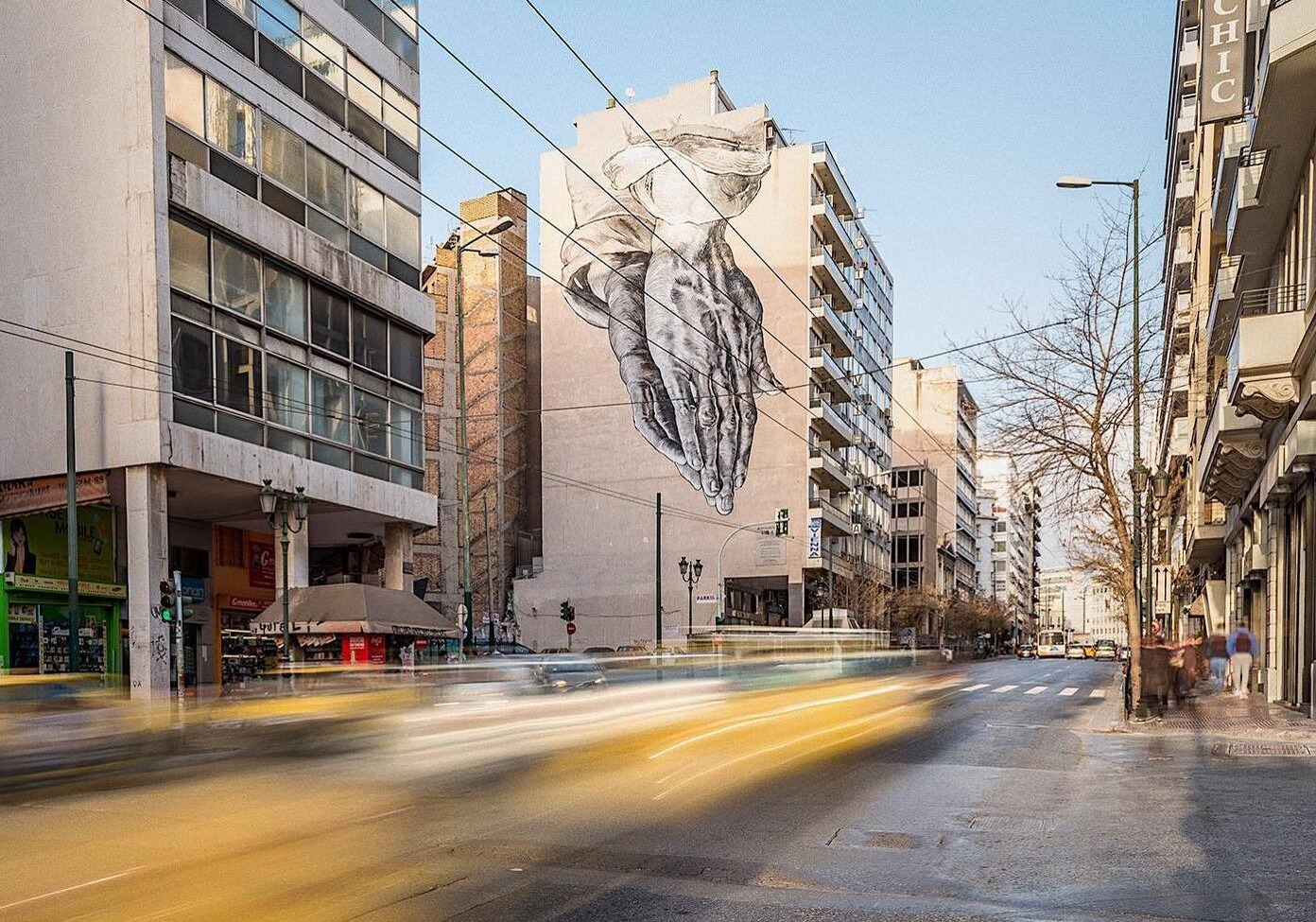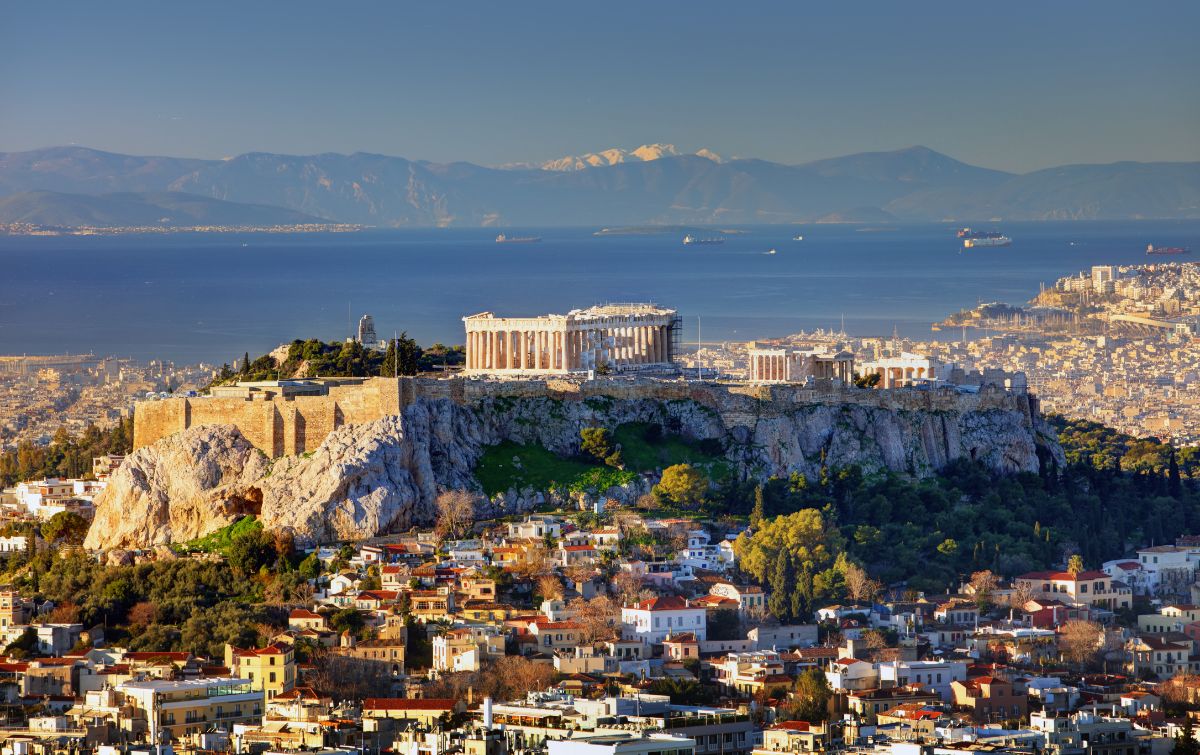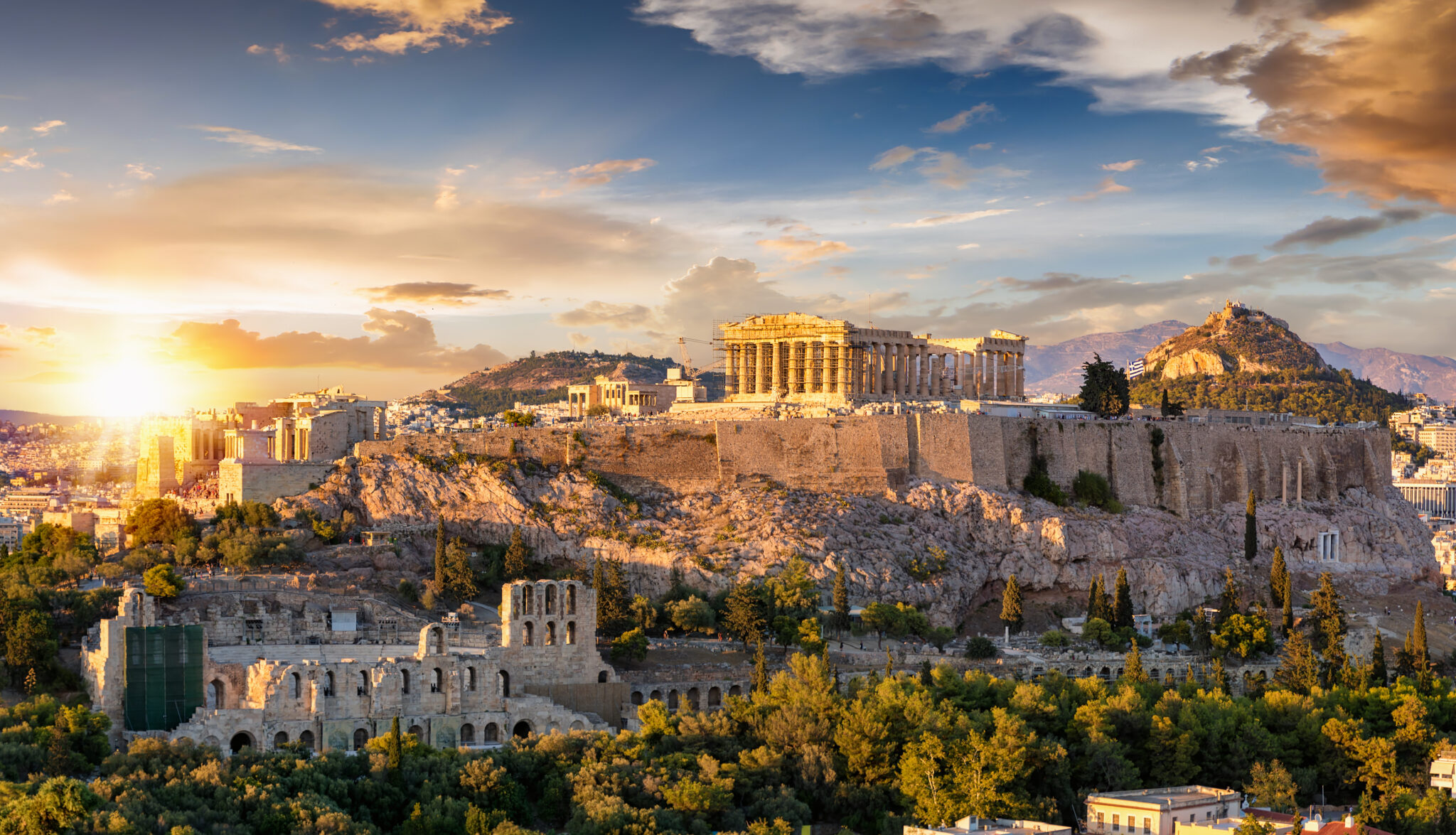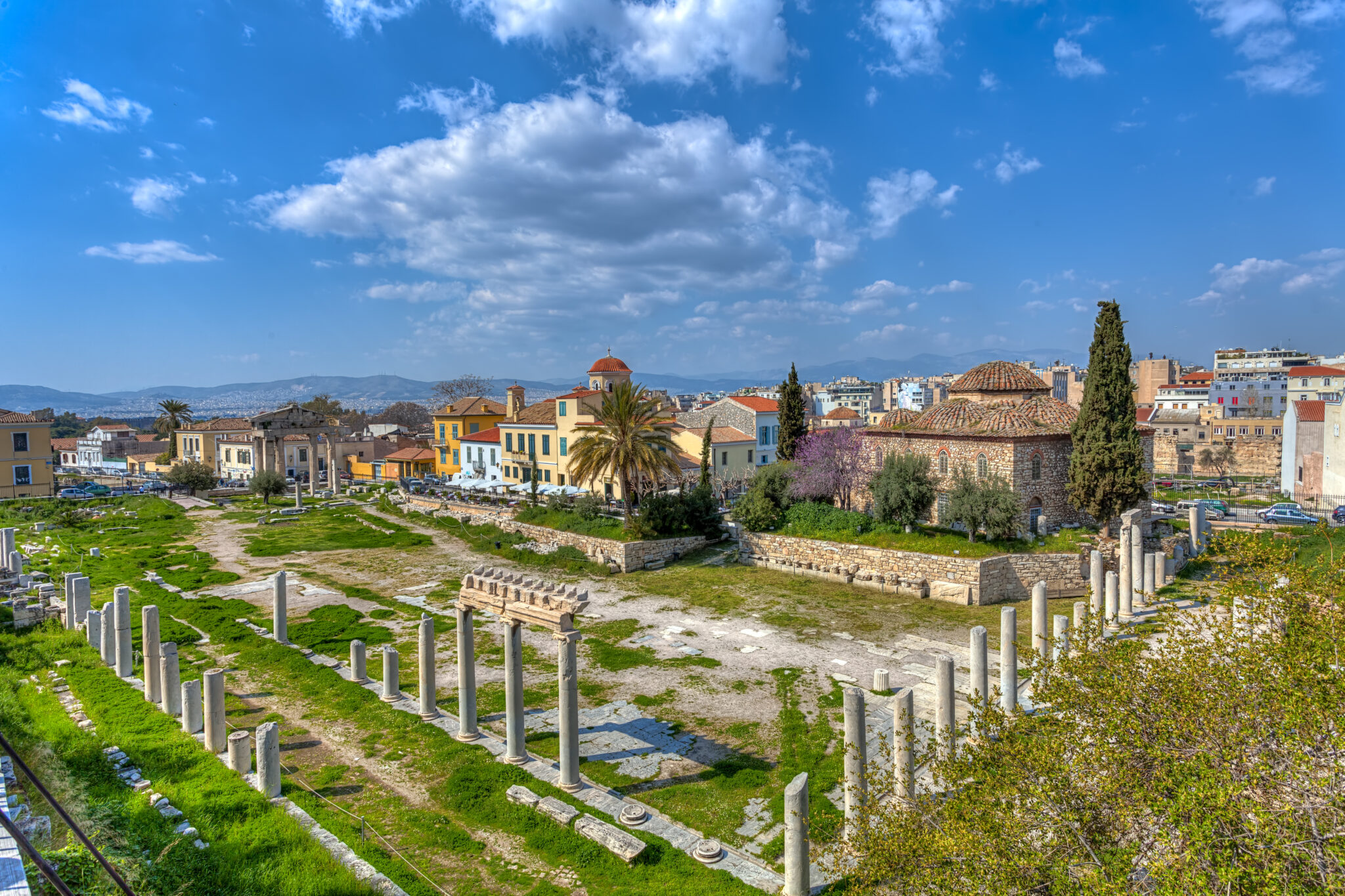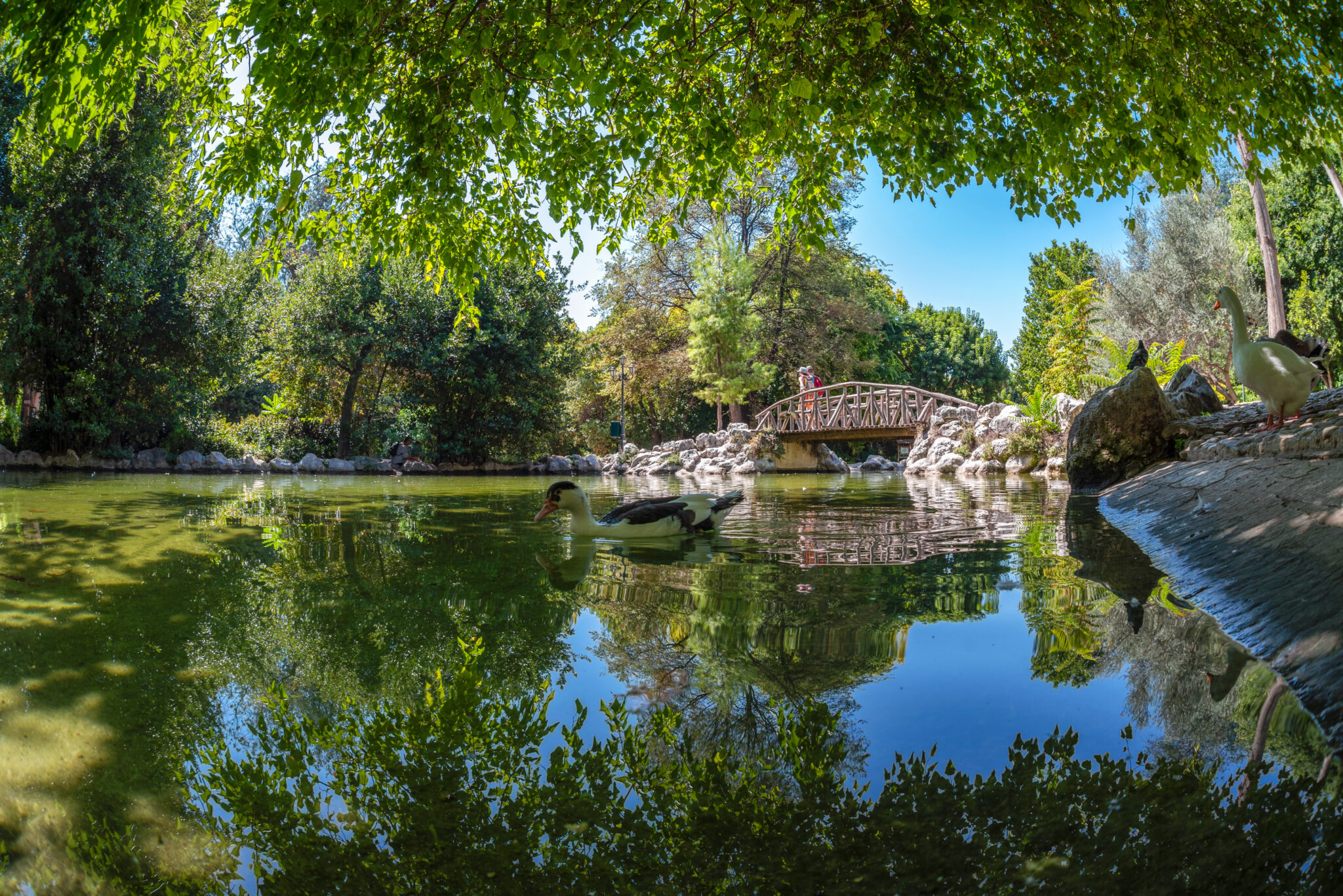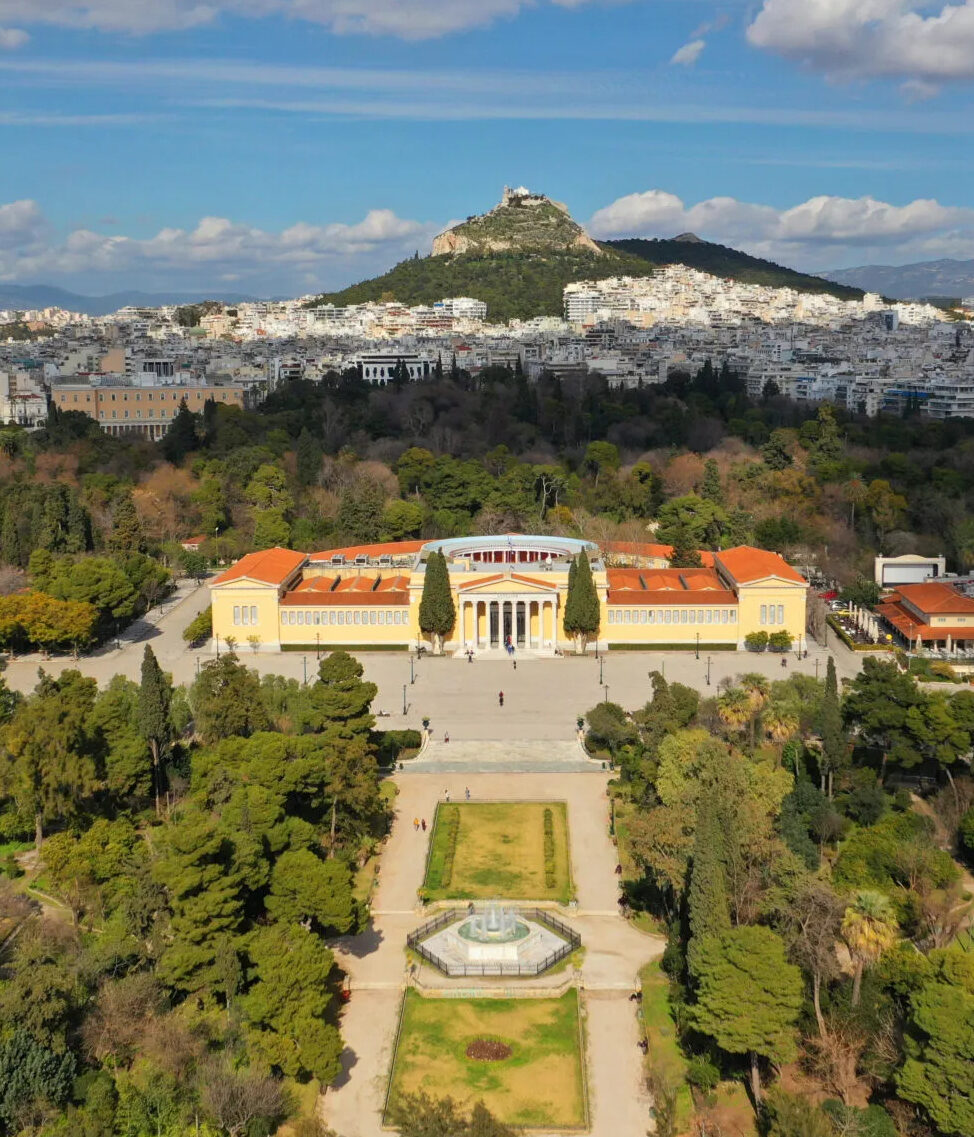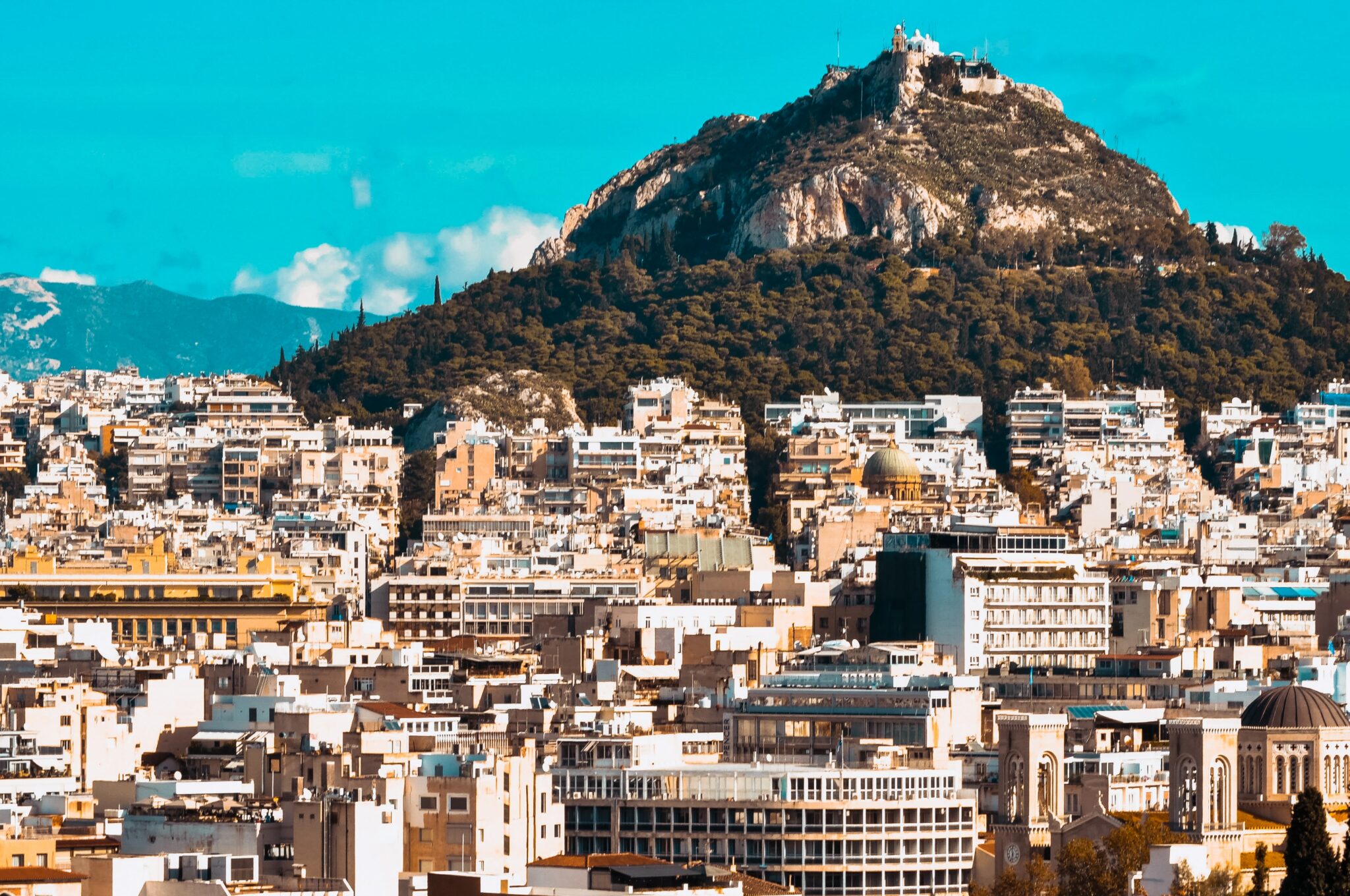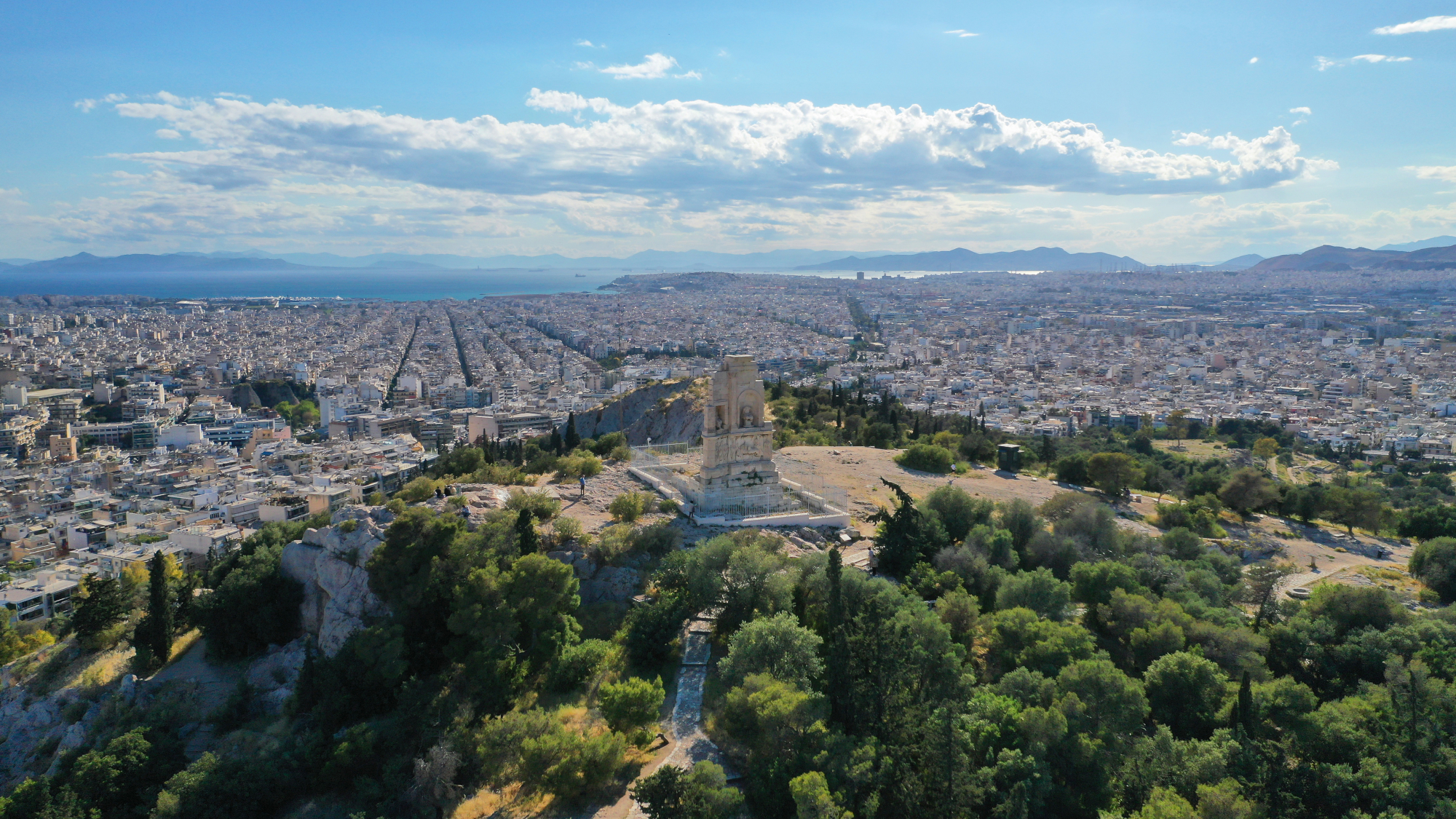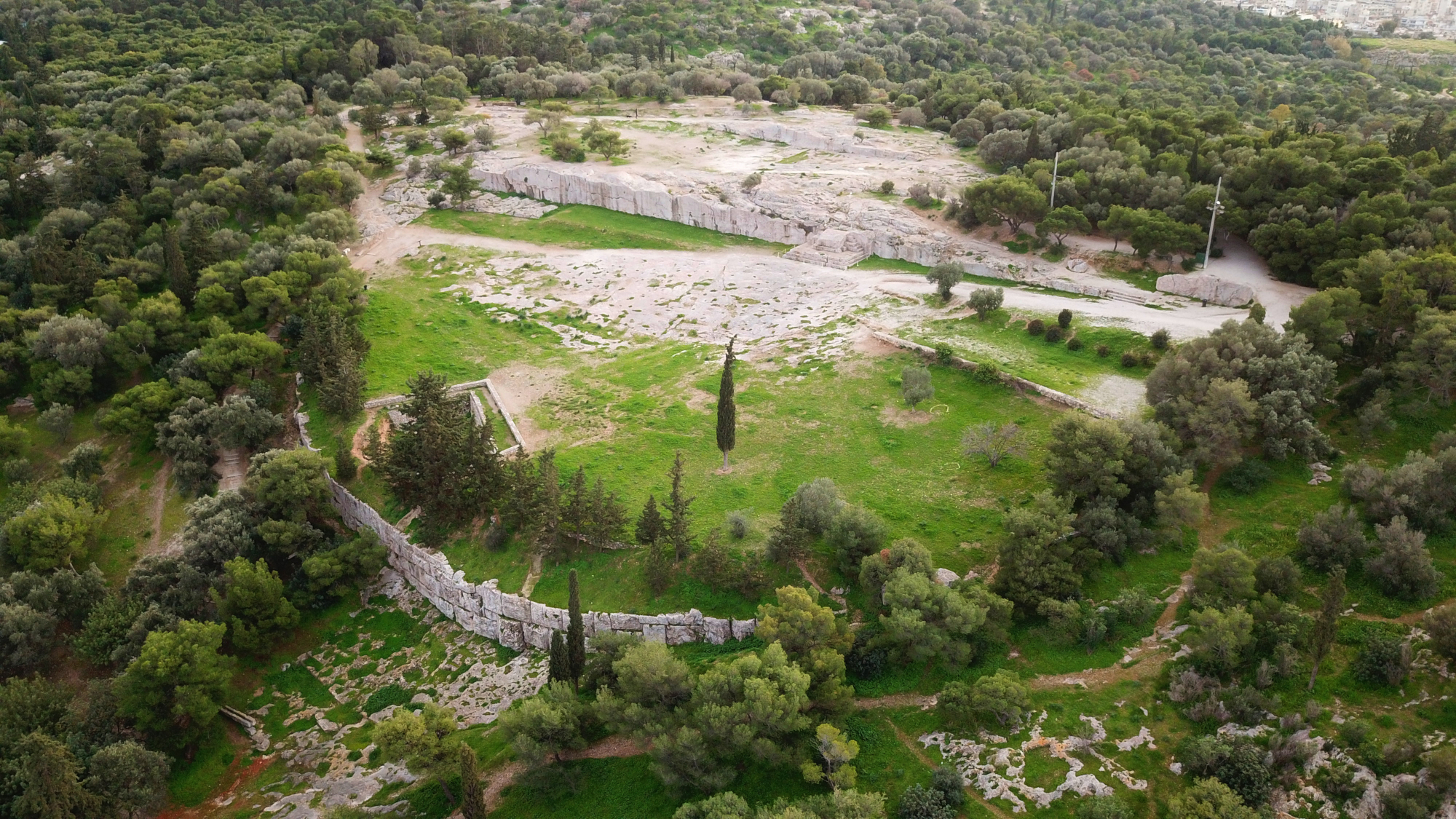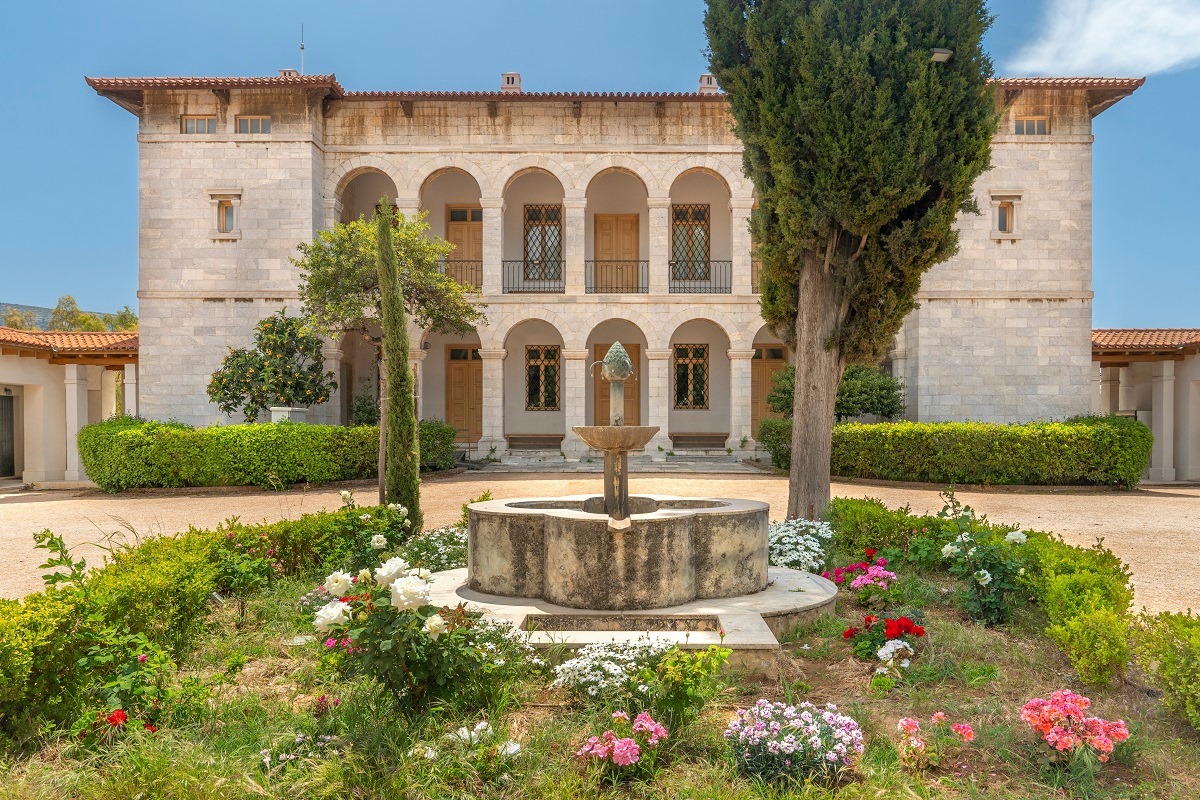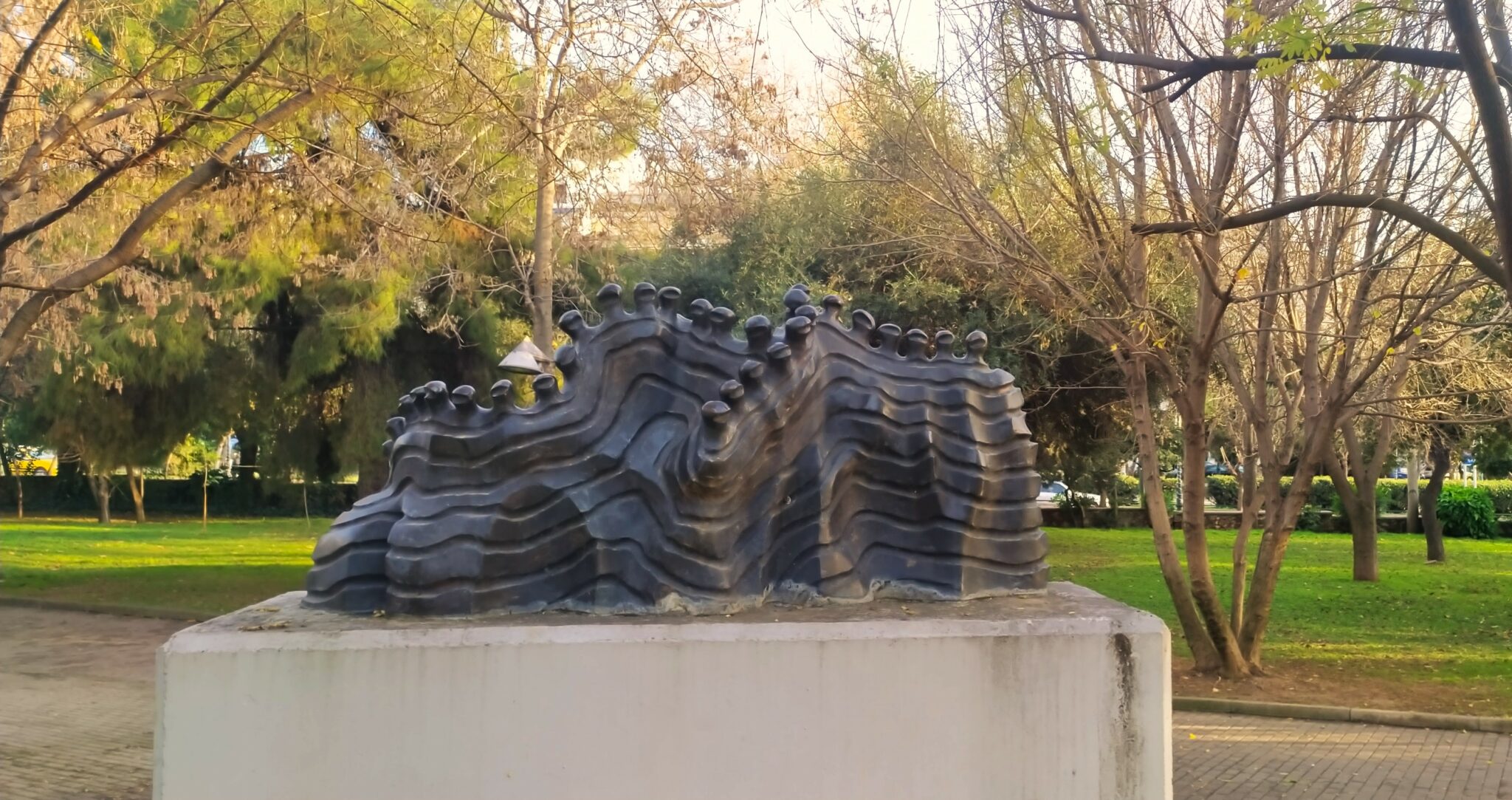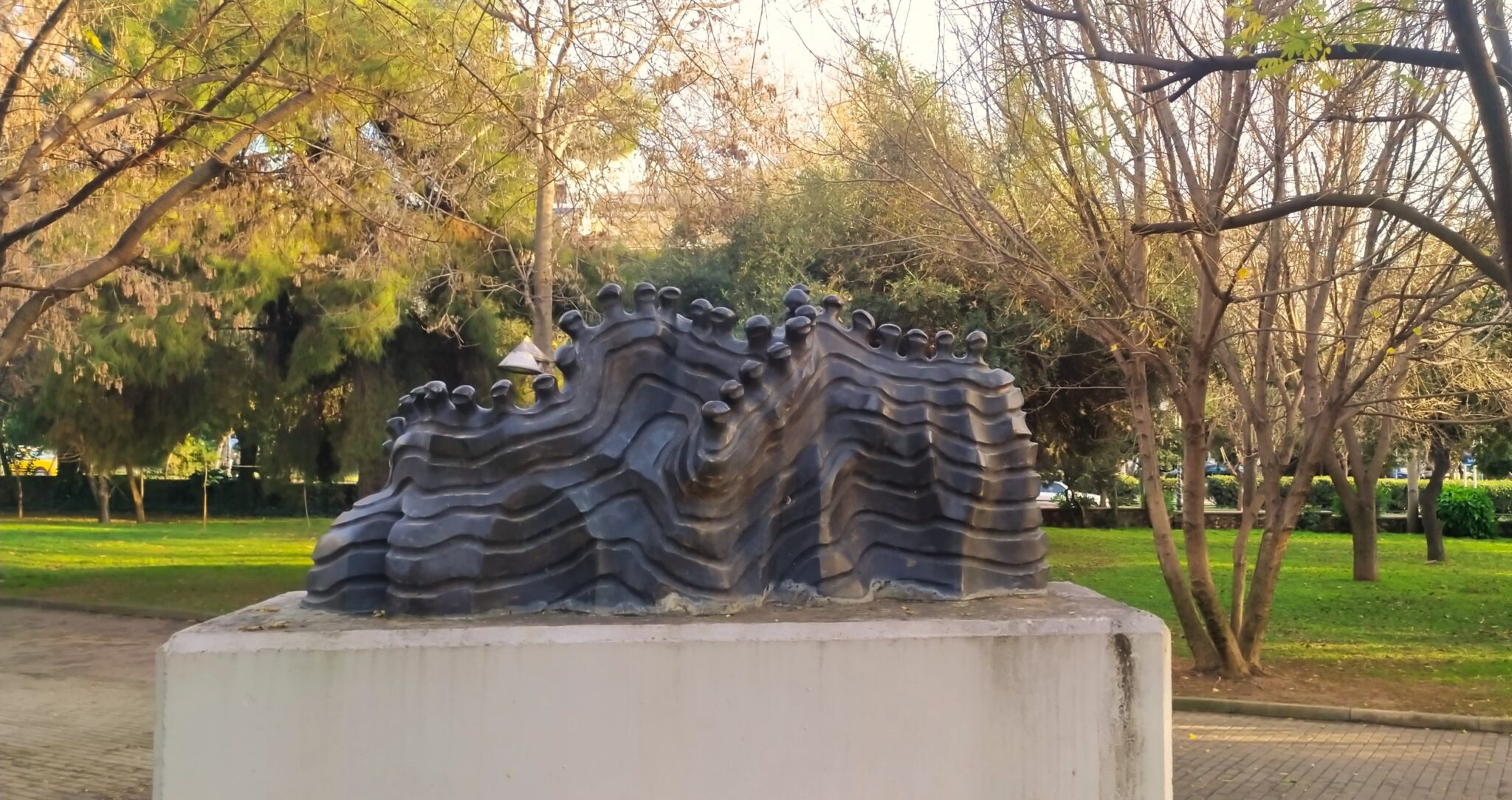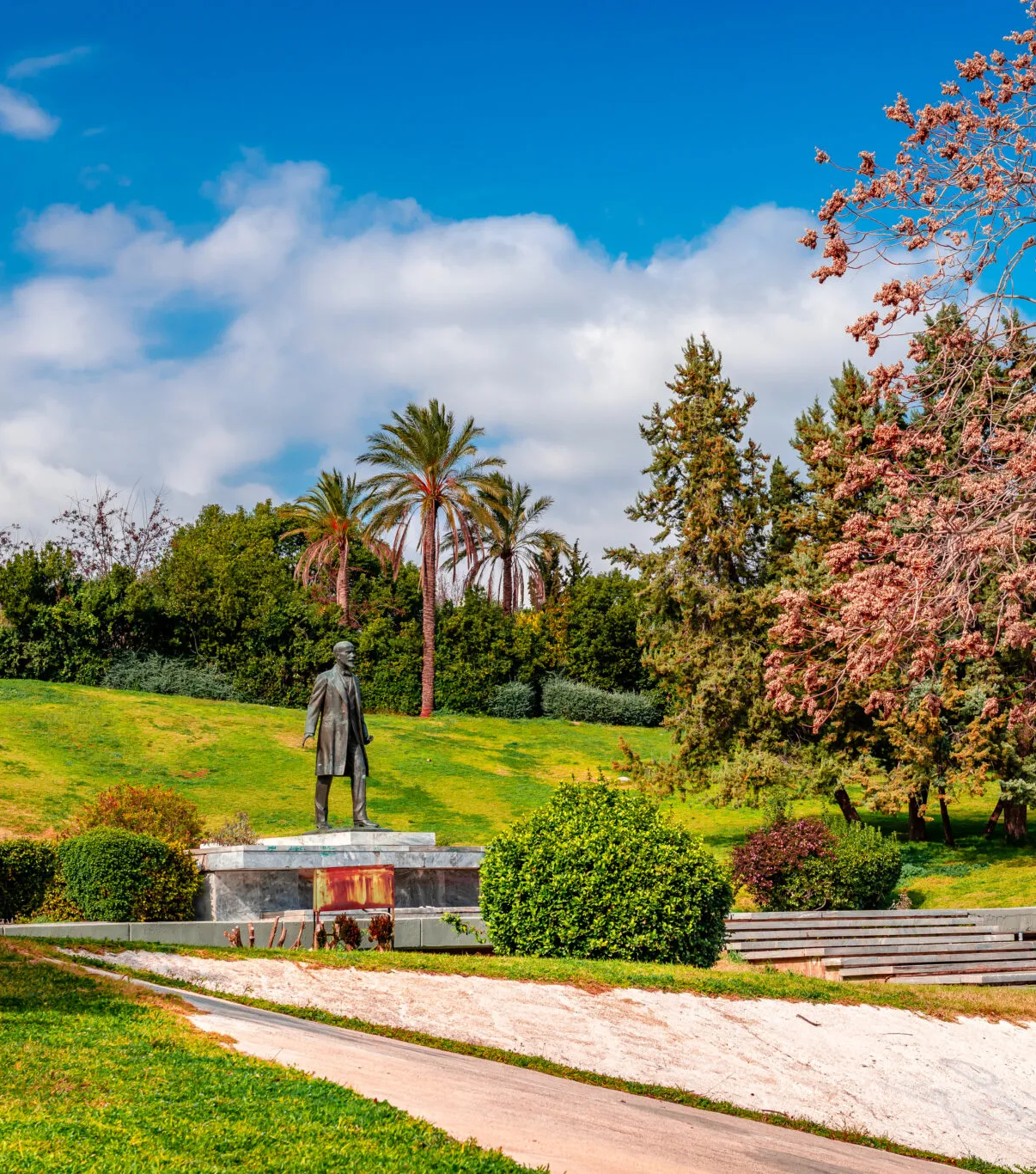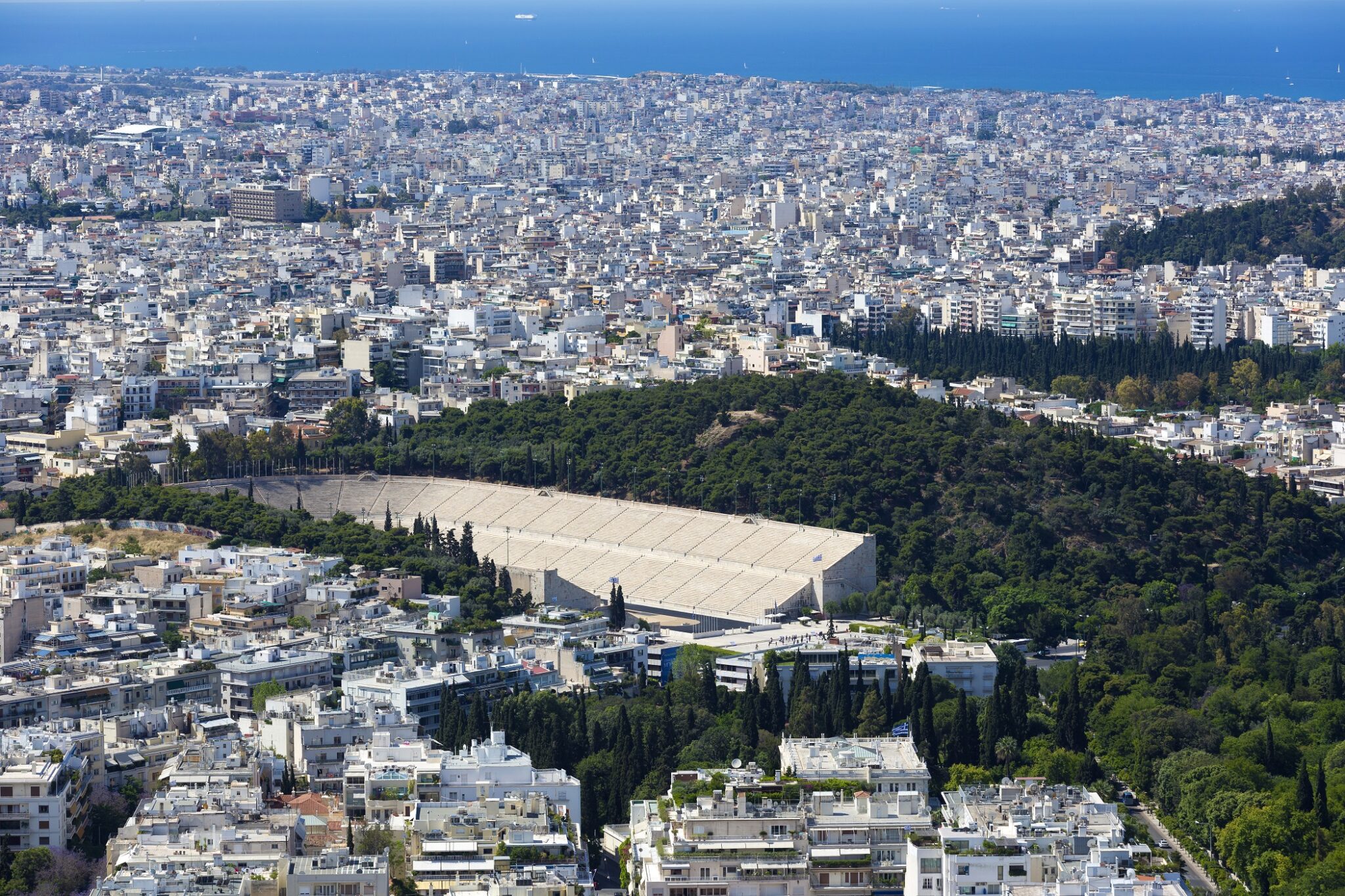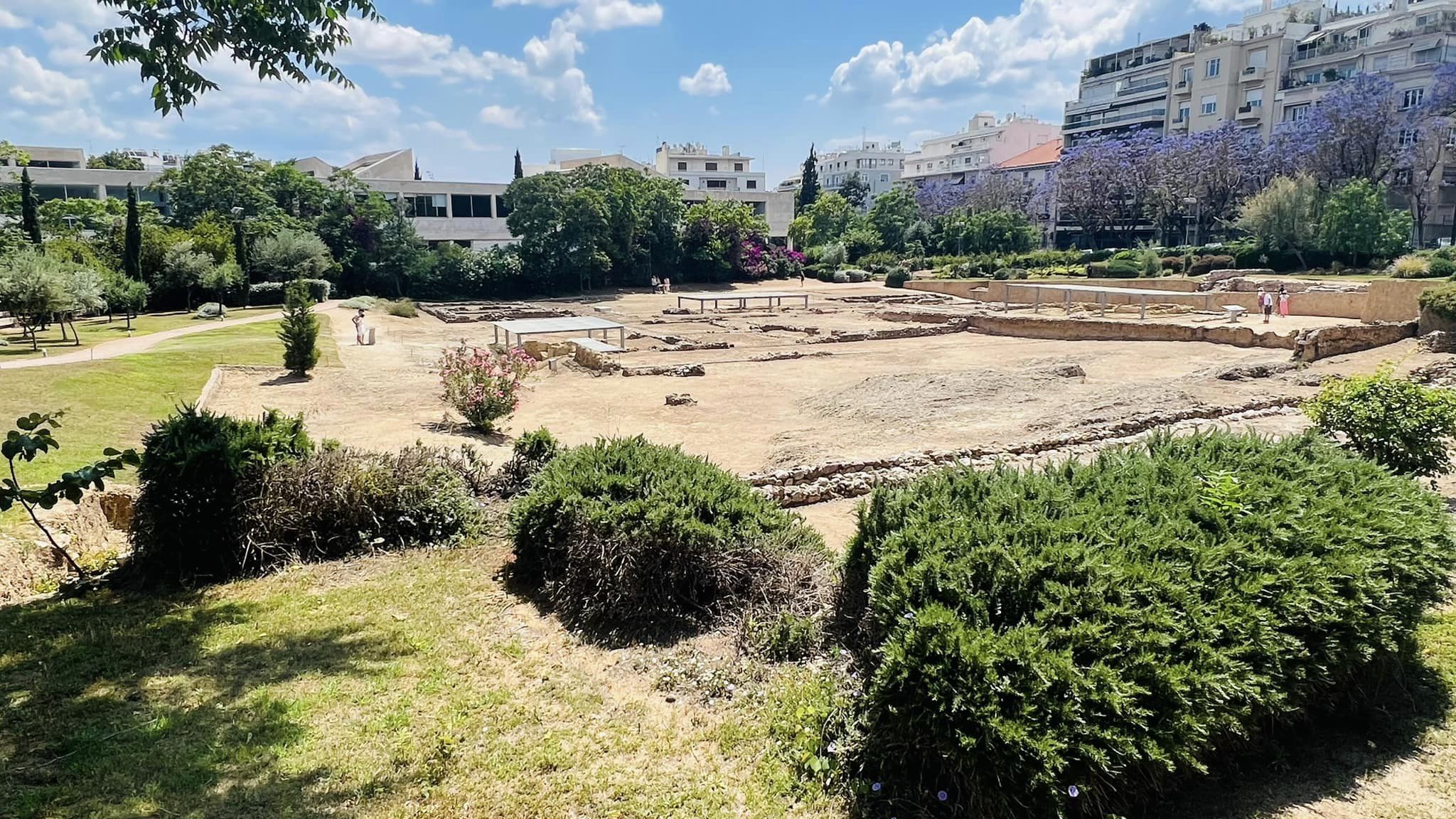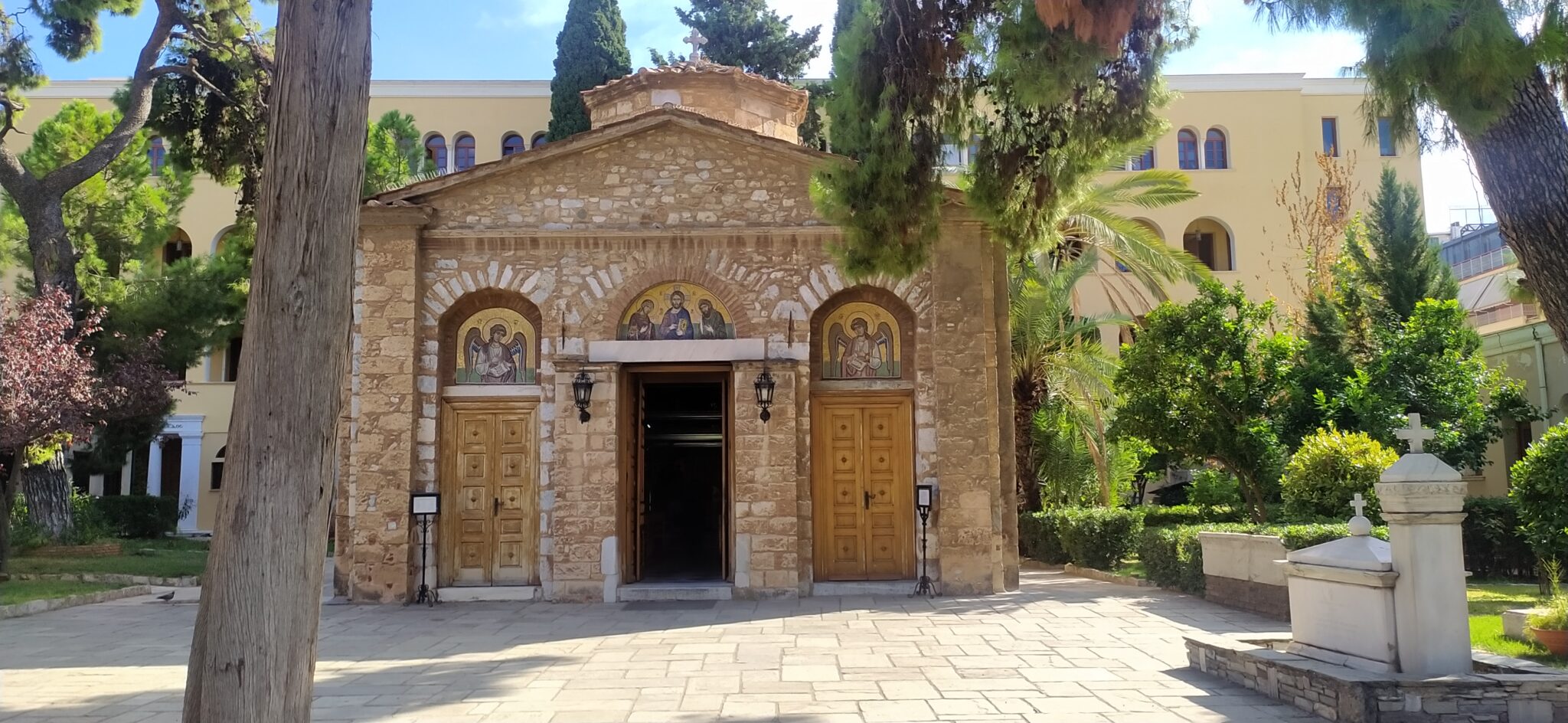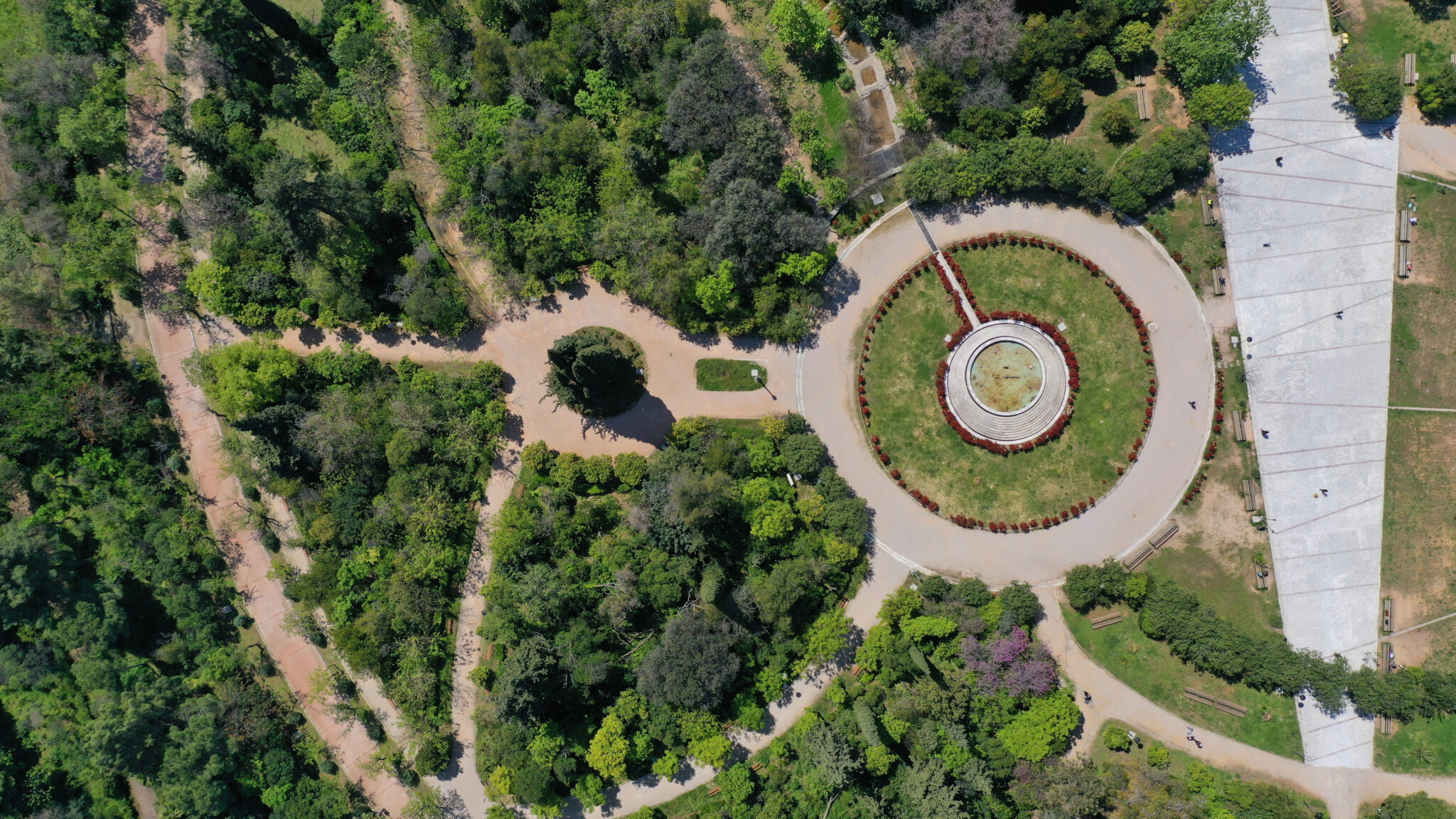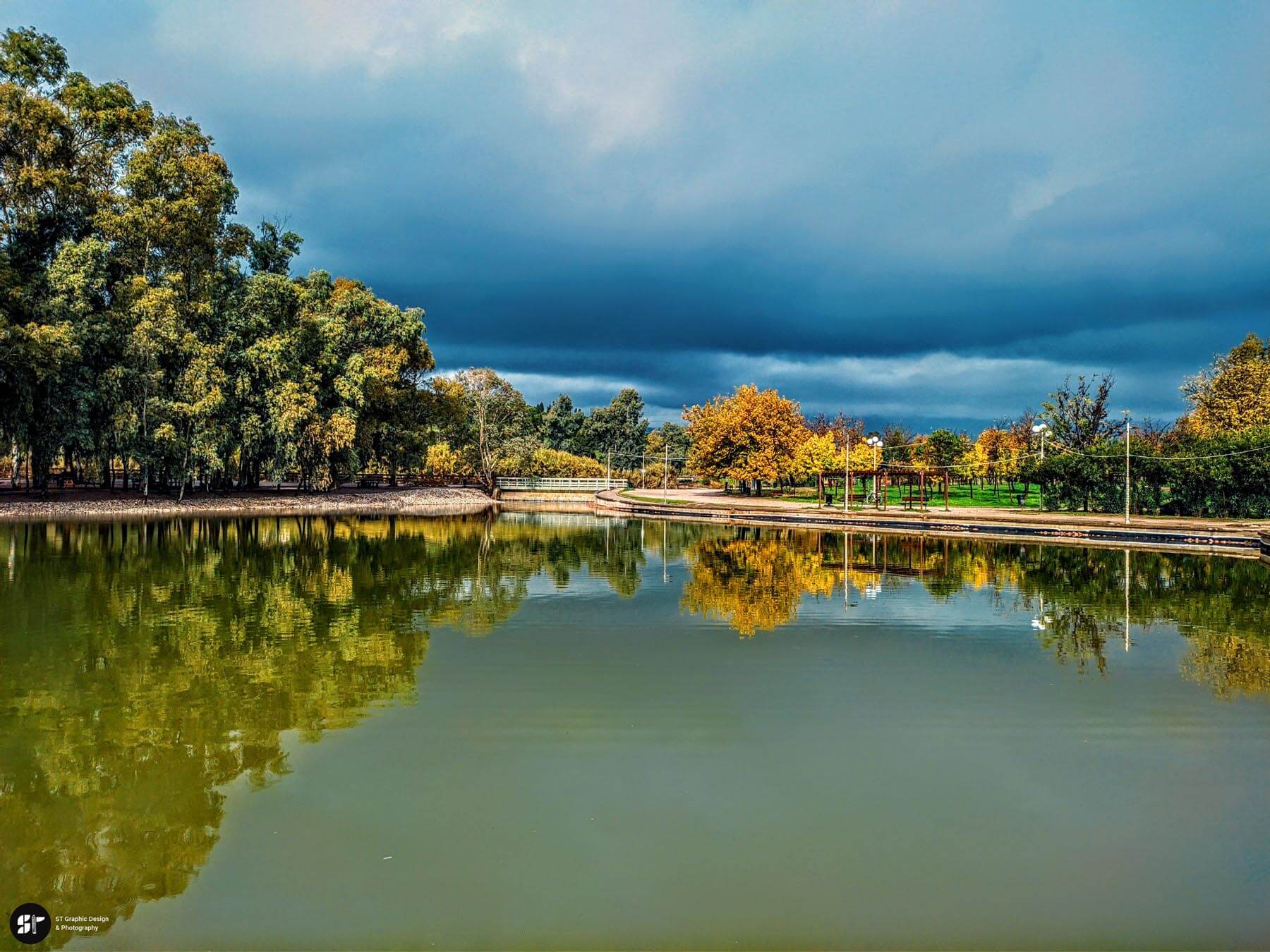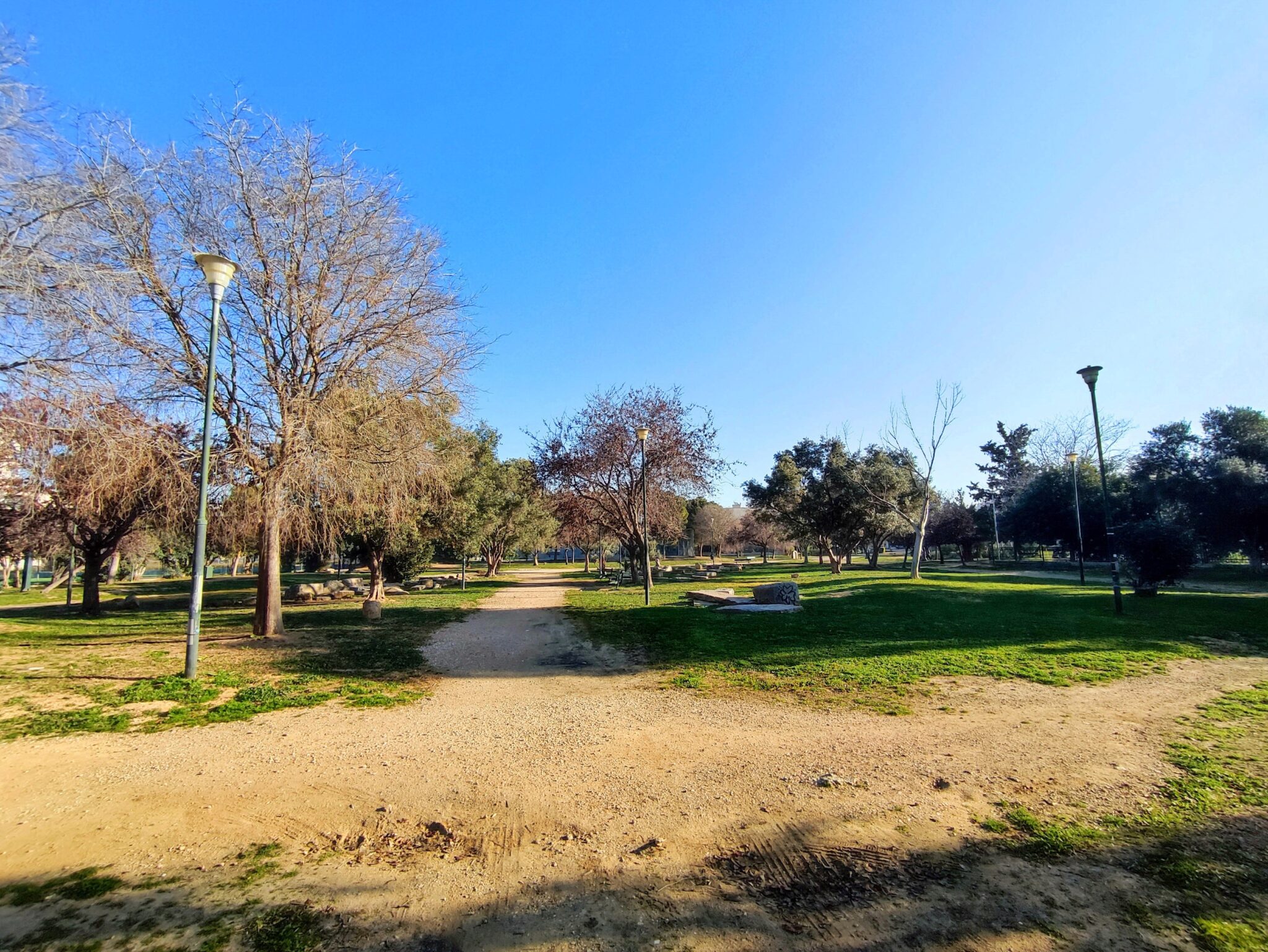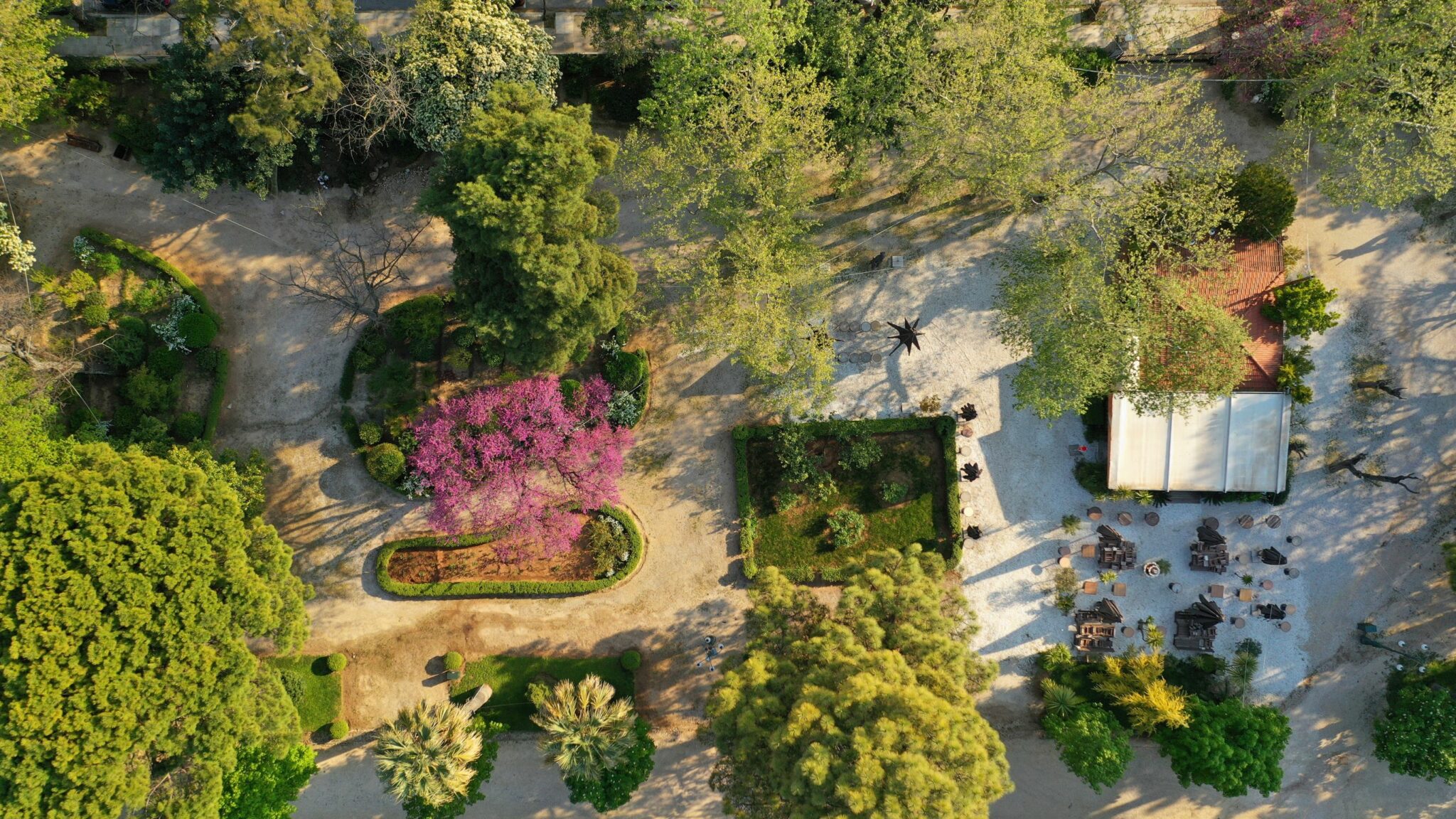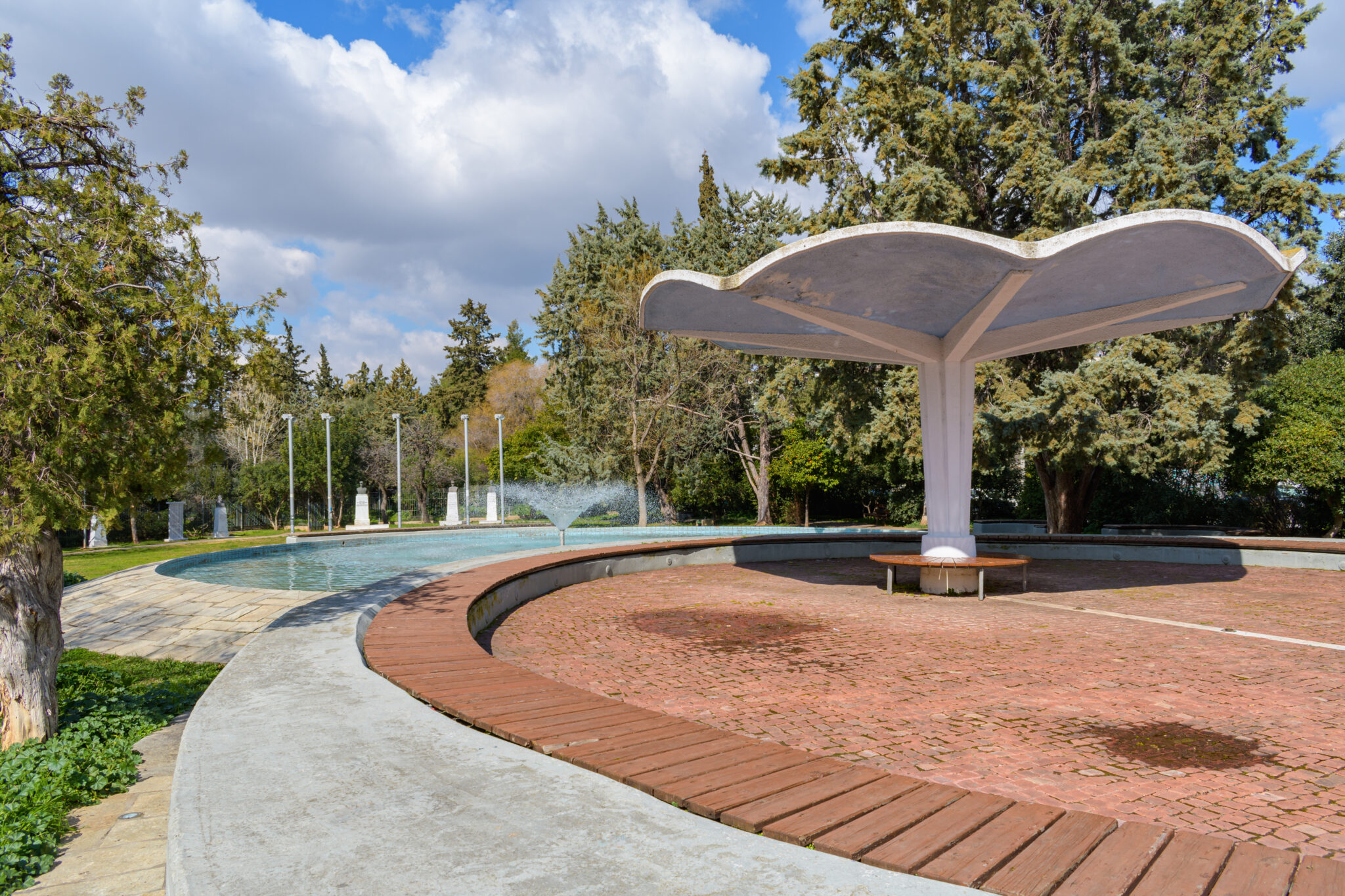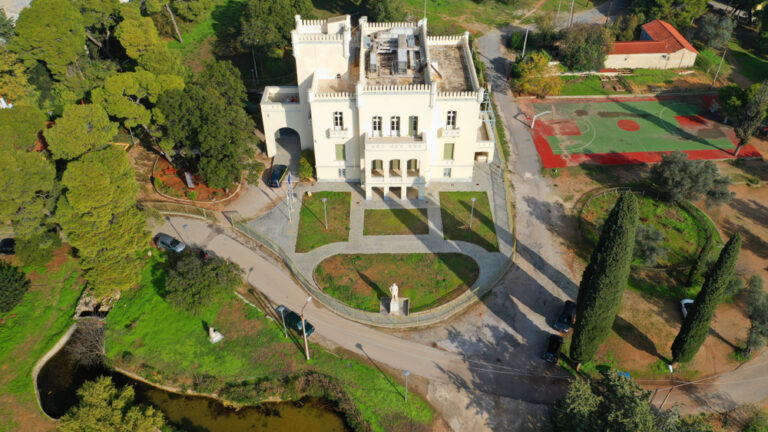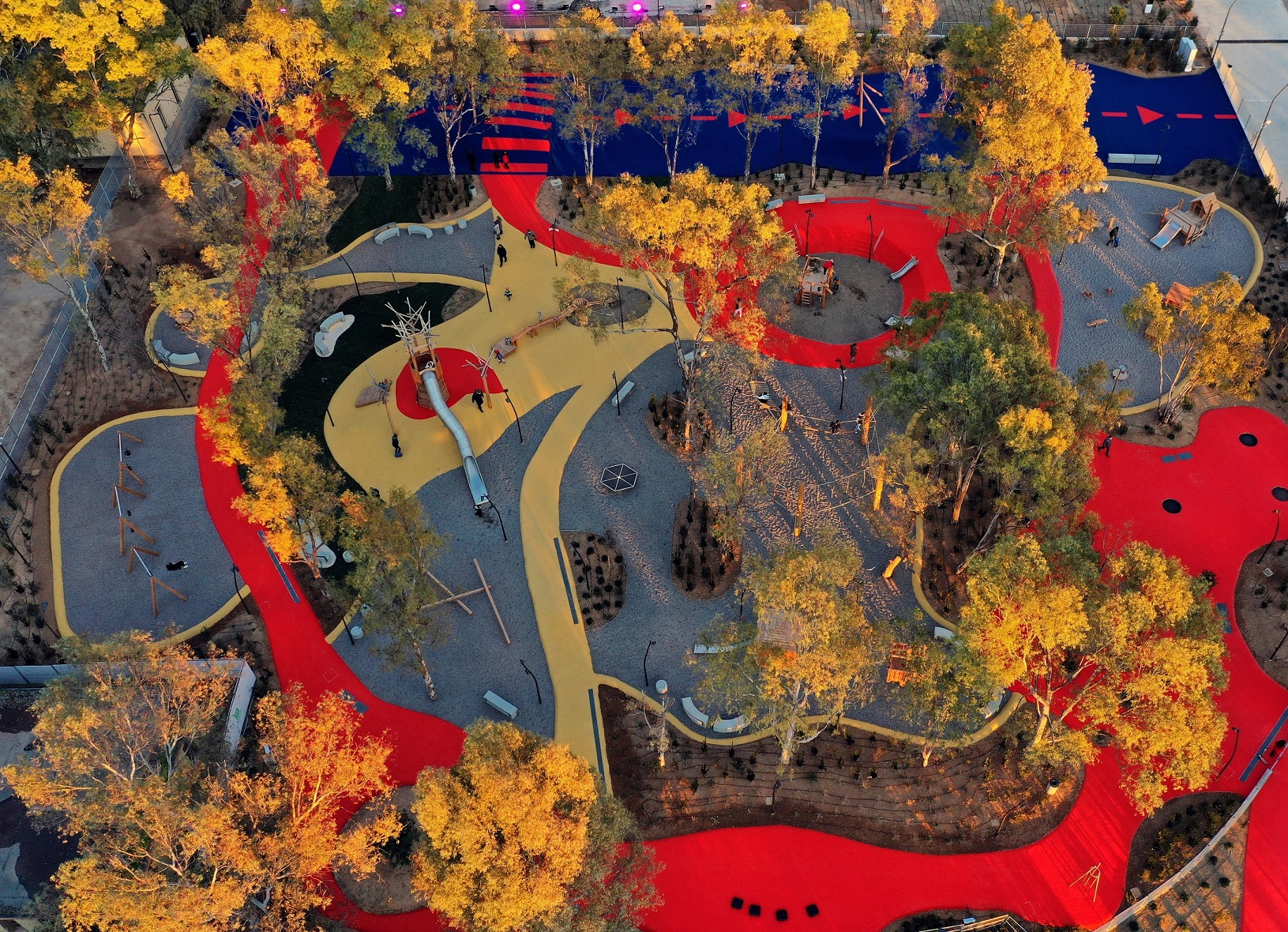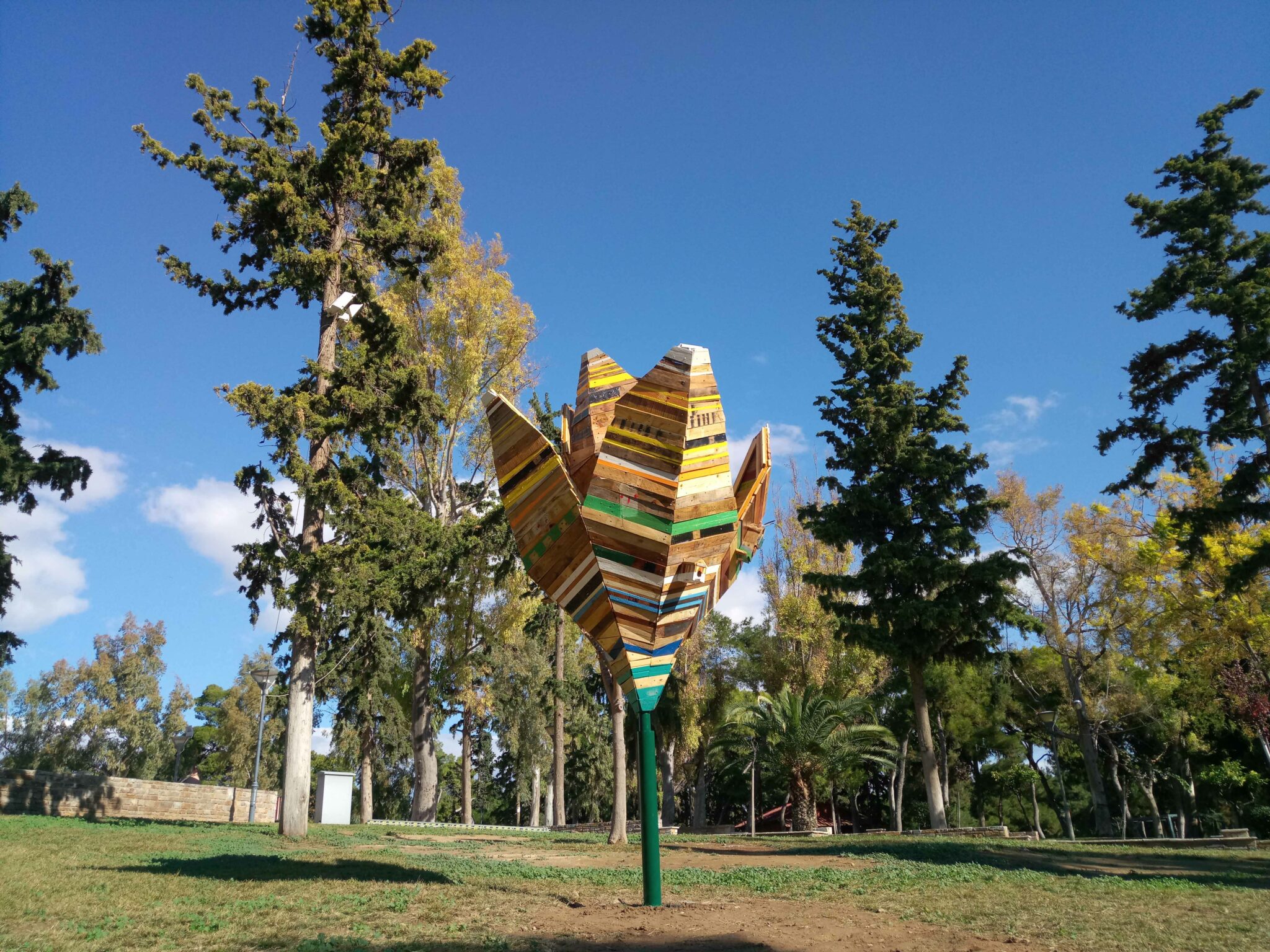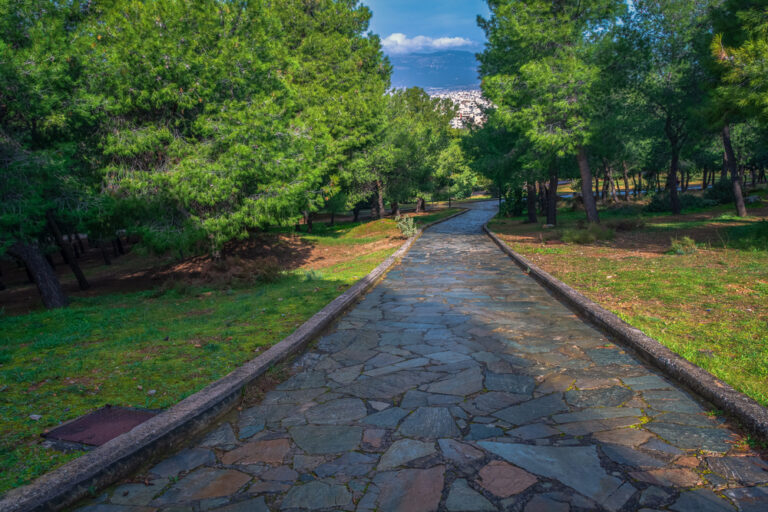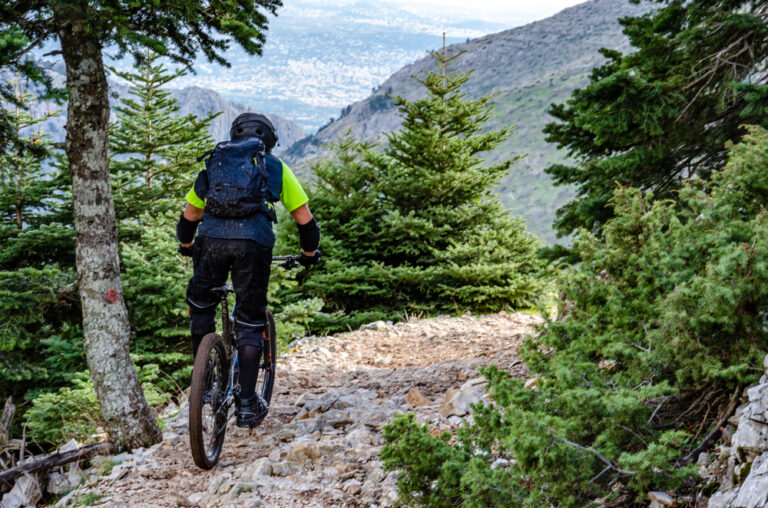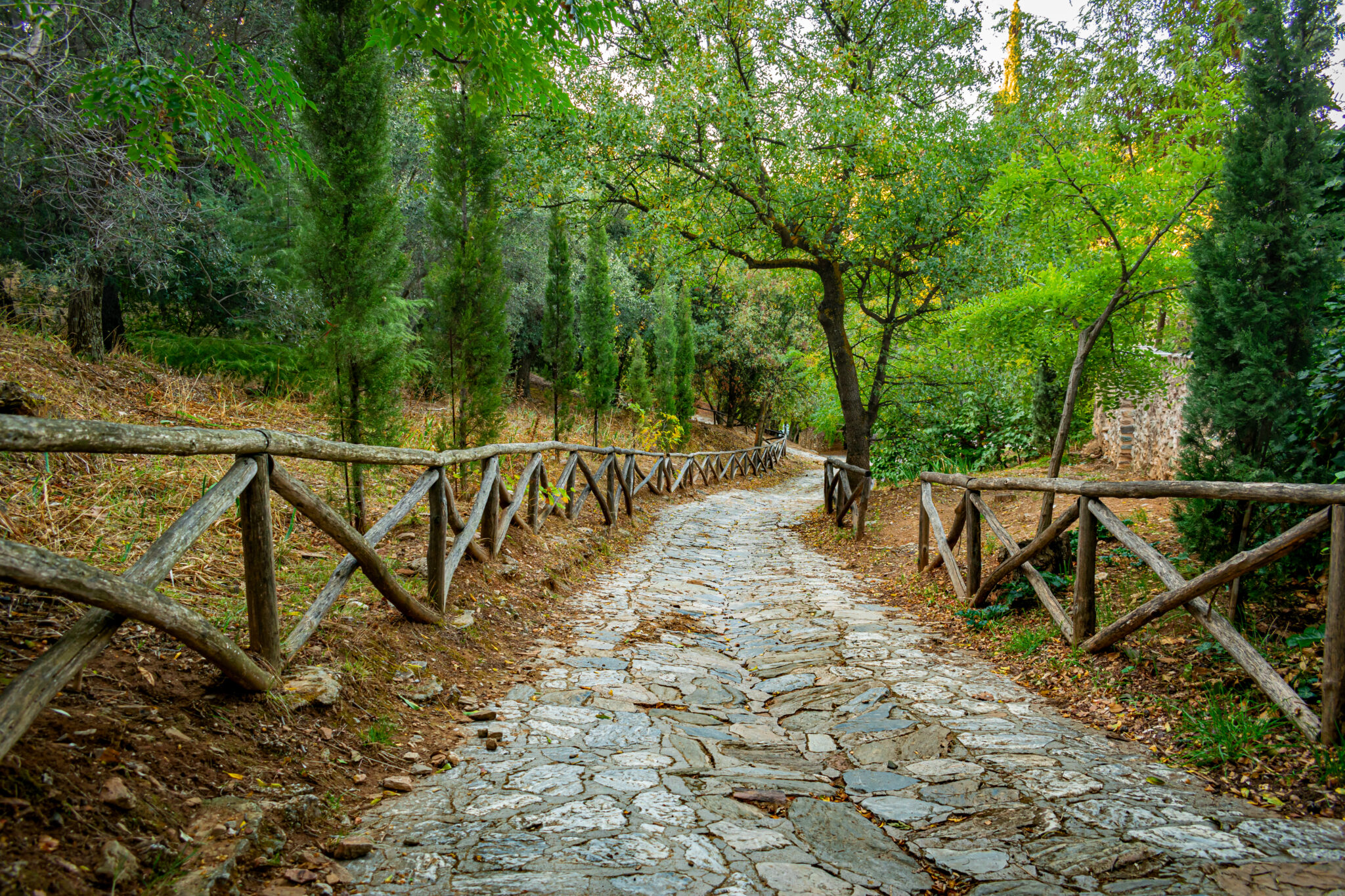It may not be one of the world’s greenest cities, but Athens certainly has its share of lush gardens, expansive parks and mini urban oases. Here we present a thorough guide on all the places around the capital where you can get your dose of green, something that as the ancients knew, offers inner peace, mental clarity and a chance to get away from the more agitated rhythm of the day.
From the National Garden in Syntagma to rugged trails on mountains that embrace the city, we offer you plenty of lush ideas for regenerating in natural environments, some with a rich and admirable diversity of flora because after all, we are certain that is easy being green.
National Garden & Zappeion Garden
Situated behind the Parliament Building in Syntagma Square, the National Garden, created by Queen Amalia between 1838 and 1840, is a prominent urban green space. It is home to over 500 species of trees and plants from around the world, including Australian pines and Canary date palms. There are large ponds, scatterings of ancient ruins, a Botanical Museum and Children’s Library, a Roman mosaic and a variety of animals including goats, swans and parrots. Facilities include a playground and café.
Zappeion Garden
Built in 1888 and designed by Danish architect Theophilus Hansen, Zappeion Hall was the first building to be constructed specifically for the revival of the Olympic Games in the modern world. Named after its benefactor, Evangelos Zappas, the semi-circular neoclassical building with a Corinthian facade has played a versatile role, from hosting the Olympic fencing in 1896 to serving as an important venue for political and cultural events throughout Greek history and until the present day. The pretty and peaceful gardens that surround it, with a marble water fountain, are ideal for young kids or pets, include a playground and blend into the National Garden.
Lycabettus Hill
Known and loved for its fabulous panoramic views of the capital, the Acropolis and the sea, Lycabettus is ideal for activities such as jogging, yoga, dog walking, family strolls and romantic outings. It is crowned by the 18th-century whitewashed St George’s Church, which can be seen from the city centre, topped by the Greek flag, and the nearby Sky Bar. Halfway up the hill, visitors can also enjoy a meal or a drink at the Prasini Tenda cafe-restaurant, with its sweeping views. Accessible on foot (around a 15-minute steep trek up) or by funicular (on Aristippou street, at the end of Loukianou, Ploutarchou and Marasli streets, which end in stairs, or Aristodimou street by car), it is also home to the open-air Lycabettus Theatre of the City of Athens, a recently renovated venue for summer concerts and events.
Filopappou Hill
Located near the Acropolis (and reachable via a pedestrian road and park designed by architect Dimitris Pikionis that forks off Dyionissiou Aeropagitou street), the 147-metre-high Filopappou Hill is a wonderful place to enjoy panoramic views of the city as well as the chance to get a singular view of the Acropolis and Lycabettus Hill almost side by side, making it a popular destination for walks and hikes. Notable attractions include the 16th-century church of Agios Dimitrios Loumbardiaris, with its frescoes and marble floors and made using different pieces of ancient ruins. The summit is marked by the monument to Julius Antiochus Philopappos, a second-century prince.
Pnyx Hill
The Pnyx, which derives its name from the Greek “pyknos” meaning dense, was an open-air meeting place in ancient Athens with a capacity of about 15,000 men who in the 5th Century BC meeting place gathered there for the all-male assembly of Athenians, known as the Ekklesia. Prominent orators such as Aristides, Demosthenes, Pericles and Themistocles delivered speeches here, forging the process of Democratic thinking. Situated between Filopappou Hill and Nymphs’ Hill, one of its notable features is a large niche in the eastern rock wall near the speakers’ platform, thought to contain a statue of Zeus Hypsistos and smaller votive offerings.
Byzantine Museum Garden
Sprawling behind the palace of the Duchess of Plaisance, now the Byzantine and Christian Museum, this one-hectare park rich in fruit trees, herbs and an abundance of shrubs, lies along the historic path of the ancient Ilissos River. Under-recognised, especially considering its enchanting natural landscape and open-air exhibitions, this park remains a welcome oasis in the urban landscape.
Alsos Ilisiou
Alsos Ilisiou, just a 10-minute walk from Evangelismos metro station, covers an area of approximately 60 hectares. It can be entered from Iona Dragoumi Street, next to the courtyard of Agios Charalambos Ilisia Church, for a scenic walk among pine and cypress trees, and a playground.
Rizari Park
Located close to the Athens War Museum and where you’ll find the entrances to Evangelismos metro station, the park is rich with Mediterranean flora and is a legacy from 1844. It honours Georgios Rizaris, a former member of the Filiki Eteria, (the key group in Greece’s fight for independence from the Ottoman Empire), who had envisioned a central city garden for the recreation of young people. The park has floor tiles with words from Samuel Beckett’s poem ‘Cascando’ (1936), chosen by David Harding: “If you do not love me, I shall not be loved / If I do not love you, I shall not love”.
Eleftherias Park
A hilly expanse near Megaron Mousikis metro station, this park is a popular green space in Athens overlooking Vas. Sophias Avenue. Despite the traffic below, it offers a verdant escape and is ideal for dog walkers and office workers on a break. It is home to the Noah café-restaurant and next door to the gardens of the Athens Concert Hall, where summer music events are held, and where you’ll find the trendy bar-restaurant Fuga.
Ardittos & Agras Hills
Ardittos Hill is named after the ancient hero Ardittis, who is historically linked to the city’s judicial system and according to legend, united the ten tribes of Athens. It was here that the members of the Supreme Court of Eliaea took an annual oath to judge fairly. The geographical importance of Ardittou is evidenced by its role in the construction of the original Panathenaic Stadium, which dates back to 339 BC under Lycurgus. Next door on Agras Hill stands a stone platform for a life-size ship used in the Great Panathinaic Festival, which celebrated Athena’s birthday with various competitions and rituals. The rich biodiversity, historical monuments and scenic beauty of these two hills make them wonderful getaways for walking and connecting with ancient history.
Strefi Hill
Also known as “Achesmos”, this is a small hill in the Exarcheia and Neapolis neighbourhoods, opposite Lycabettus Hill. Originally a quarry from the 1840s to the 1920s, it was first planted in 1926, mainly with pine trees and bequeathed to the Municipality of Athens by the Strefis family in 1963. Today you will find steep stone paths, an open-air theatre, a playground with a statue of Zeus, a basketball court and a snack bar. This park is suitable for various activities including picnics, trekking, concerts and sports.
Hippio Kolono and Skouze Hills
Hippio Kolonos Hill and Skouze Hill in Athens are serene landmarks in the city’s urban landscape that soothingly contrast to the cacophony of nearby busy streets, offering a tranquil escape with their lower elevation and well-preserved natural environment. At the top of Kolonos Hill, visitors will find two important monuments dedicated to Philhellene archaeologists: the German Karl Müller (1797-1840) and the Frenchman Charles Lenormant (1802-1859), highlighting the area’s historical and cultural importance.
Diomedes Botanical Garden
On the outskirts of Haidari at the end of Iera Odos, the Diomedes Botanical Garden is a remarkable but often overlooked natural retreat, that is today easier to reach thanks to the extension of the metro to Aghia Marina station. Covering 186 hectares, this botanical haven boasts 4,000 species of endemic and exotic plants, with a network of 25 lakes and various water features, as well as more than 100 species of roses and numerous flower beds. Group and school tours can be booked here upon request, or you can simply visit independently.
Aristotle’s Lyceum
The archaeological site of Aristotle’s Lyceum, located on Rigillis Street between the Sarogleio Mansion and the Athens Conservatory, is a significant historical landmark. Originally a prominent lyceum in ancient Athens, it was an educational centre outside the Diochares Gate, known for its lush surroundings. Discovered in 1996, the site is now a well-maintained area that combines archaeological remains with Mediterranean flora, offering visitors a chance for contemplation.
Moni Petraki
The official seat of the Holy Synod of the Orthodox Church of Greece, this small but significant site both spiritually and environmentally, is located on Gennadiou Street in Kolonaki and is open to the public daily. The monastery’s immaculate garden displays a variety of Attica’s flora, including cypress, pine and palm trees, as well as numerous plants that offer an aromatic experience in early spring. Seated on a bench, with eyes open or closed, visitors can enjoy a sense of renewal and tranquility, just 200 metres from busy Vasilissis Sofias Avenue.
Pedion Areos
The 93-hectare ‘Ares Field’ was created in the 1930s to commemorate the heroes of the 1821 revolution. This tranquil park, ideal for walking and jogging, is rich in plane and olive trees and Mediterranean plants, with shaded benches, a playground, a cafe, churches and an amphitheatre. There are busts of revolutionaries and a memorial statue of Athena the Defender.
Tritsis Park
Located in the western suburbs of Attica, this is the largest park in the Athens metropolitan area, covering approximately 4.85 hectares. The lush urban retreat with six artificial lakes connected by a large canal has a wildlife sanctuary and is home to over 140 species of birds, according to the Greek Ornithological Society. With thousands of fruit trees, 72.843 hectares of vineyards and olive groves, it is also child-friendly, with various activities for children. At the edge of the park is the Queen’s Tower, the former summer residence of Queen Amalia of Greece, with stables, gardens and a winery.
Plato’s Academy
In 388 BC, on the sacred site of one of the city’s ancient gymnasiums for the training of athletes since the 6th century BC, Plato founded his famous philosophical academy. This modest open-air archaeological site offers the unique experience of walking in the footsteps of the father of Western philosophy. Explore the archaeological remains, enjoy the tranquil atmosphere of the park and visit the Plato’s Academy Digital Museum, which offers interactive exhibits about Plato’s life nearby on Monastiriou Street.
Kifissia Park
Located in Kifissia, this charming park has been a delightful stop for locals and visitors alike since its inauguration in 1885, when the Attica Railway extended its HSAP electric railway line (green) to Kifissia. Although there’s no playground, the park has two picturesque ponds with goldfish. At Christmas, the park comes alive with exciting rides, games and stalls and at the beginning of May it hosts the annual flower show.
Papagou Park
The enduring popularity of this park is no surprise, with attractions including a dog park, a large playground, a pond, an impressive fountain and statues of Greek revolutionaries placed throughout. It also has an amphitheatre for musical and theatrical performances, and a popular bar-cafe called Piu Verde. It is a 10-minute walk from Ethniki Amyna metro station.
Stavros Niarchos Cultural Centre Park
Opened in 2015, the modern Stavros Niarchos Park offers a reviving escape from the city. Accessible by tram or free shuttle service from Syntagma, it offers visitors the refreshing sea air and a range of daily activities (see the events page on the SNFCC website) including free yoga, art and other classes for adults and kids, outdoor film screenings and cultural performances. This 20-hectare park features lush greenery, a vegetable garden and amenities such as playgrounds, a sports field, a jogging track and a giant chessboard.
Syngrou Park
This large and less frequented park is on the way to Kifissia. As well as its fragrant pine groves, Syngrou has attractions such as a pistachio grove, a vineyard, a theatre, a small lake, sports grounds and the city’s only Gothic Orthodox church, designed by renowned architect Ernst Ziller. It’s also a great place to train for the Athens Marathon, with a full circuit that’s a tenth of the classic route, totalling 4.2 kilometres.
Nea Philadelphia Park
Located in the western suburbs, this park along Dekelias Avenue is a popular meeting place for locals throughout the day. On weekends, especially in summer, it is a hive of activity as groups and families meet, play or have a drink before heading to the open-air cinema. The park offers safe cycle and skate paths for children and a designated dog park for four-legged companions.
The Elliniko Experience Park
Europe’s largest coastal park, just off the Athens Riviera, is a relaxing place for strolls, outdoor gatherings and children’s activities. The park features fountains and a lush landscape with 55,000 plants and 500 trees, making it perfect for morning walks and evening chilling. The playground is inspired by the history of civil aviation, with wooden climbing frames and colourful rides. With over 70,000 square metres of space, it’s also great for running, cycling or outdoor yoga.
Nea Smyrni Park
Covering five hectares, Nea Smyrni Park is a green oasis in the heart of the city. Established in the 1920s, it is one of the largest parks in the Attica region, with various species of trees and dense greenery. Situated between central roads, it’s easily accessible. The park has a lively children’s playground and hosts occasional summer events, making it a popular urban retreat. It’s an ideal place for jogging, with well-maintained paths and has a large area dedicated to pigeons. Although there are no sports facilities, the park has walking and cycling paths.
Veikou Park
This park spans 104 hectares, inviting visitors to delight in its natural allure and engage in various activities. It is perfect for sports enthusiasts, featuring facilities like a soccer field, basketball and tennis courts, a running track, and a bike path. It also includes a 4.7-km loop trail ideal for hiking, running, and walking, especially in warmer months.
JUST OUTSIDE ATHENS
Mt Parnitha
Explore Parnitha, a sprawling nature reserve just outside the city that is popular among fitness enthusiasts and nature lovers alike, especially at weekends. Despite a devastating fire in 2007, Parnitha’s 30,000 hectares are home to a wide variety of wildlife. Start your adventure at the Bafi or Flabouri Refuges, which offer packages for groups of two or more. Join mountain bikers, dedicated runners, speed walkers and even rock climbers. Keep an eye out for the mountain’s red deer, Cervus elaphus, or the majestic golden eagle soaring above. If you’re feeling adventurous visit the mysterious Pan’s Cave.
Tatoi Royal Estate
Tatoi Estate, a stunning natural destination just 27 kilometres from the centre of town, graces the south-eastern slope of Mount Parnitha. Once a royal retreat and the summer home of the Greek royal family, it became state property in 1973 after the abolition of the monarchy. This vast area is covered in a lush forest with Aleppo pine, oak, arbutus, olive, strawberry and plane trees. Outdoor enthusiasts flock here, especially on the weekend, to explore the 90 kilometres of unmarked trails. The highlight of the estate is Europe’s smallest summer palace, built in 1874. The Tatoi Estate is a great place to hike, cycle, jog and picnic.
Mt Ymmitos
Mt Ymmitos, a 20-minute drive from central Athens, offers nature lovers and outdoorsy folks a peaceful retreat in the crisp, fresh air. Its vibrant ecosystem is home to over 100 species of birds, while an extensive network of trails makes it ideal for running, hiking and mountain biking. It’s a beautiful mix of nature and culture, with ancient ruins and the 11th-century Kaisariani Monastery. A scenic 30-minute hike takes you to the Church of the Ascension for breathtaking views of the city. For quick access from the city centre, take bus no. 224, or a 20-minute taxi ride away.



